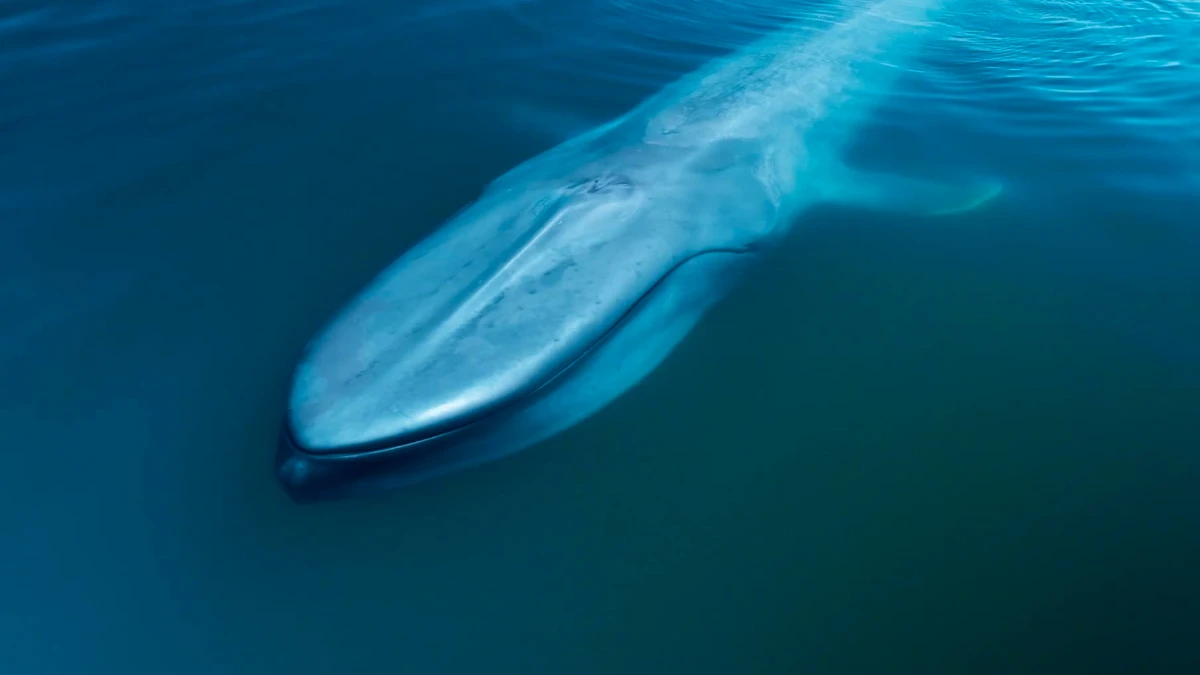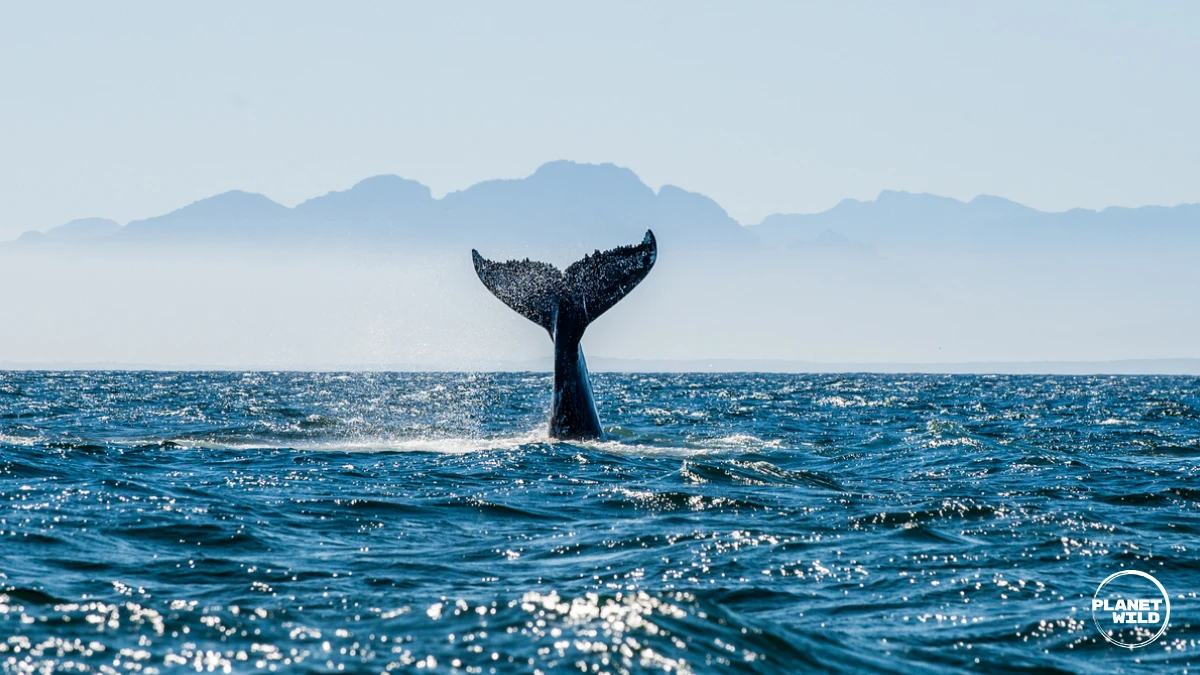Big, blue, and endangered: Amazing facts about whales

Whales are some of the most beautiful, mysterious, and misunderstood creatures on Earth. Whales travel vast distances across our seas, dive to incredible depths, and are highly intelligent. But unfortunately, climate change and commercial whaling have wiped out millions of these stunning animals.
We want to dive deep into all the burning questions you’ve ever had about whales, why they are such an important part of ocean ecosystems, and what problems they still face.
10 incredible facts about whales

- The blue whale is the largest animal to ever exist, and can grow up to 100 feet (30 meters) and weigh as much as 200 tons.
- Blue whales are also the loudest animals on Earth, with a song that can reach 188 decibels, which is louder than a jet engine and can be heard hundreds of miles away.
- Blue whales were almost hunted to extinction by commercial whaling in the 1800s and early 1900s. They were killed for their blubber, which was used for oil before fossil fuels took over.
- Blue whales can eat an incredible 16 tons of krill a day. That’s 12% of its own body weight! Or about 21 adult cows, for comparison.
- Gray whales migrate up to 12,430 miles (20,000 kilometers) every year on their round trip between the Arctic and Mexico.
- Sperm whales are the deepest diving mammals, descending to depths of over 3,280 feet (1,000 meters) in their hunt for giant squid.
- Sperm whales also sleep by ‘standing’ vertically in the water, enjoying short naps of 10–15 minutes. An eerie sight for anyone to come across!
- Bowhead whales can live for up to 200 years! This is thought to be down to their environment—the ice-cold waters of the Arctic.
- Sailors are thought to have mistaken Beluga whales for mermaids because of their human-like knees.
- Whales are very smart, with excellent communication, memory, and high levels of emotional intelligence and problem-solving skills. In fact, a sperm whale has the largest brain on the planet, five times bigger than ours.
- Whale poop is one of the ocean’s most important fertilizers! Whale pump, as it’s known to scientists, helps move important nutrients from the deep ocean to the surface. Whale pump is a primary fertilizer for phytoplankton—a microscopic algae collectively responsible for more than half the oxygen we breathe on Earth!
Your burning questions about whales, answered!
One of the most fascinating things about whales is that we don’t actually know everything about them. This is because it’s hard to keep track of their movements in the vastness of the ocean, and even harder to get reliable data. This was the focus of our blue whale mission, where our community funded cutting edge drone technology to uncover key data that can help us protect whales better.
Here are a few things we do know about whales: there are around 90 different species of whales, dolphins, and porpoises in the world, which are collectively known as cetaceans. There are two types of whales: toothed and baleen. Toothed whales, as you may have guessed, have teeth which they use to eat or fight. Toothed whales include orcas, dolphins, and sperm whales. Baleen whales, which are usually larger than their toothy counterpart, use a special bristly plate made from keratin (the same thing found in our hair and fingernails) to filter seawater for krill, plankton and small fish. Blue whales, right whales, and humpback whales are all baleen whales.
Are whales fish?
This might seem strange considering their oceanic habitat, but whales are not fish. They are marine mammals. Like us, they breathe oxygen, produce milk, and are warmblooded. As they are mammals, whales are actually more closely related to wolves than they are to sharks!
How fast do whales swim?

Despite their size, whales are some of the fastest moving animals on Earth! Their torpedo-like shape has evolved to help them glide perfectly through water. To travel such incredible distances, whales need to be able to move relatively quickly, but the gold medal in whale speed goes to the Sei whales and orcas, who have both been known to reach speeds of up to 50-60 mph! However, the cruising speed for these mammals is around the 25 mph mark. Bowhead whales are the slowest, traveling at just 3-4 mph during migration.
How big are blue whales?
At 90 feet long and up to 150 tons, blue whales are the biggest creatures on Earth, and possibly since life began. To put that into perspective, they are about as long as two standard size school buses, and can weigh as much as a passenger airplane. Their tongues are also impressive. A blue whale tongue weighs about 8000 pounds, which is the same as an adult female African elephant! The biggest blue whale ever recorded was on 20 March 1947—she was a female, weighing a whopping 190 tons.
Are whales carnivores?

Yes, whales are carnivores, regardless of whether they’re toothed or baleen. They feed on plankton, crustaceans, small fish, seabirds, seals, and a number of other ocean creatures. As a result, these predators are an important keystone species. Their poop is a vital fertilizer for oceanic algae, which all sea life depends upon. Orcas are famously the ocean’s top predator. These killer whales are both smart and deadly, and are known to eat everything from walruses and seals to penguins, sharks, and other small whales. However, they are only known to attack humans under very specific circumstances.
Why do whales sing?

Whale song is one of the most beautiful sounds in the natural world, but scientists still don’t fully understand why whales sing, but there are a few theories:
- Communication: One of the most common theories is that whales use distinct vocalizations, which we often call "songs," to keep contact between individuals, coordinate group movements, or establish dominance within a pod.
- Attracting a mate: It’s also possible that whales sing to call to each other across the vastness of the ocean. Male humpback whales, for example, are known to produce complex and elaborate songs during breeding season to find a mate.
- Navigation: Whales migrate thousands of miles, so some scientists believe they use their song to navigate their vast blue environment.
- Social bonds: Songs could also play a role in strengthening social bonds between individuals, signal their presence, or keep calves close to their mothers.

Humans can only hear a small part of a whale’s song without special equipment, and it was Ocean Alliance founder Roger Payne who first discovered and recorded complete whale songs for the first time in 1970. This kicked off a global movement to protect whales, which at the time were still being hunted for their blubber and body parts.
Are whales endangered?
Several species of whales were hunted to near extinction and some, like the blue whale, are still struggling to recover. Whales were once an important resource for humans; their meat and blubber were eaten, whale oil was used to fuel lamps, and whale bone was often used in everything from corsets to trinkets. The whaling industry also inspired famous novels, notably Herman Melville’s Moby Dick. Global estimates approximate that almost 3 million whales were wiped out during commercial whaling. Blue whale populations are thought to have decreased by 90%, and sperm whales are now just one third of their former population size. While some whale species, such as minke whales, have managed to recover, others are still teetering on the brink of extinction. Legal commercial whaling was only banned in 1986, but it is still practiced in Norway, Japan, and Iceland.

While commercial whaling is no longer the number one threat to our oceans whale species, climate change is. Climate change has led to rising sea temperatures and more acidity in the water which disrupts the amount and location of food whales rely on. This also alters their migration patterns in search for better feeding grounds. Furthermore, large boats and underwater construction produces massive noise pollution which drowns out whale song, and the risk of entanglement from commercial fishing is always high.
Why are whales so important to the ocean?

Not only are whales some of the most beautiful creatures in our oceans, they play a key role in its ecosystems. The true impact of hundreds of years of commercial whaling is not fully known, but scientists believe it has been even more devastating than we realize. As apex predators, whales prevent their prey from overfeeding and control fish and krill populations, directly influencing the food web. Their poop is also an important ocean fertilizer, and helps spread vital nutrients from one place to another. Whales themselves are biodiversity hotspots, and attract all kinds of fish and seabirds as they migrate across oceans. When they disappear from an area, or their numbers decline, this prompts scientists to investigate and help identify the underlying ecological issues that might be causing the whales to move away. Whales are also beautiful, intelligent, and a keystone species that helps support all life on Earth.

About Planet Wild
Planet Wild is committed to rewilding the planet through monthly missions that work directly with grassroots organizations dedicated to fighting the biodiversity crisis. When you become a Planet Wild member, your contribution will directly fund innovative and exciting projects all over the world, so you can make a difference from home. Learn more about what we do here.